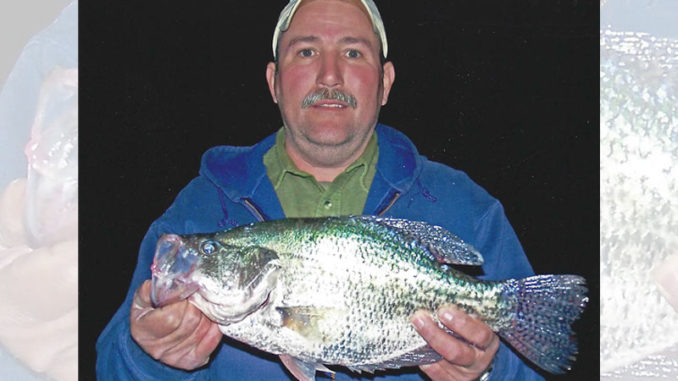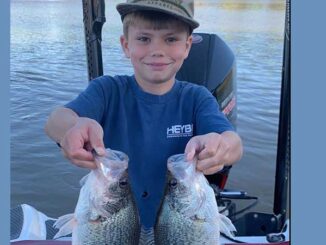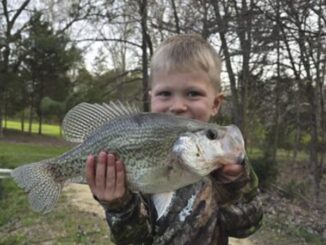
Crappie will bite shortly after heavy rains
Guide Keith Wray of Fish Docs Guide Service in Eden, N.C., said the incessant rains that have plagued fishermen since last summer shouldn’t deter the March crappie bite at Kerr Lake on the North Carolina-Virginia border.
“Heavy rains may raise the lake more than 12 feet, but the (U.S. Army) Corps of Engineers draws it down in just a few days,” Wray said.“ Unless a huge downpour comes our way in March, the fishing for prespawn crappie should be good. Three days after a rain, the fish usually start biting again. It’s been that way for years.”
In March, Wray (www.fishdocsguideservice.com) tight-lines for crappie on flats near creek mouths. His favorite places include Bluestone, Buffalo, Orange, Aarons, Peters and Sandy creeks on the 49,500-acre lake’s upper end, west of Clarksville, Va.
Wray sets out eight 16-foot spinning rods in the bow of his boat, paired with reels holding hi-vis yellow 10-pound line — which serves a specific purpose.
Side-scanning helps locate fish in creeks
“I can see the yellow line twitch with the slightest bite, even when the rod tip doesn’t move,” said Wray, whose rig consists of a 15-foot clear leader with a 1/4- to 1-ounce, double-swivel torpedo weight tied a few feet above a 1/16-ounce Betts marabou jig tipped with a minnow. One of his deadly color combinations is red/green/yellow; he likes jigs with three colors.
“The jighead is red, the body is green, and the tail feathers are yellow,” said Wray, who fishes the jigs in 15 feet of water or less than halfway down in the water column.
“If the water is 10 feet deep, I’ll place the baits in about 5 feet of water,” Wray said. “As the water warms in late March, I do most of my fishing in water 5 feet deep or less.”
This season, the water coming out of the backs of creeks has been muddy, but that doesn’t bother Wray or the crappie.
“These are spawning creeks where the big females, weighing 1 to 2 pounds, move in first,” he said. “By the end of March, the smaller males move in.”
Wray may set 12 rods ranging from 10 to 16 feet long out of the stern of his boat when the fish move shallow. He uses corks with these outfits and employs side-scan depth-finding units to help him locate crappie and forage at the creek backs.
“The fish don’t relate to stumps or brush that much this time of year,” Wray said. “Instead, they relate to forage moving along the creeks. That’s what I’m looking for with my units.”



